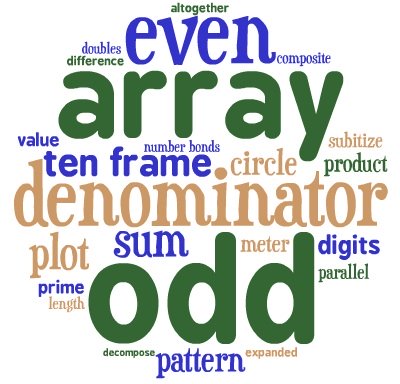Looking for Tier 3 math vocabulary words for K-5? You are going to love these, along with a wealth of ideas for incorporating math talk into your classroom.
Many students struggle with the language of math. Why?
Mathematics is full of Tier 3 academic vocabulary that are subject specific. There are also some Tier 2 directional words, such as before, behind and just after that could mean different things depending on the context.
How can teachers begin to help these students and ensure success? Using a math word wall is often the first thing that comes to mind, but along with that, a teacher can:
- Explicitly teach the language of mathematics in a variety of ways
- Second language students need teachers to incorporate the use of “realia” to enable comprehensible input
- Kinesthetic movements will also greatly aid ELL and struggling learners
Math vocabulary must be used often and made as relevant as possible to our students daily lives. As the depth of content academic vocabulary increases, Tier 3 instruction becomes critical.
One way I highly recommend is to get students talking about math pictures. Highly engaging illustrations make abstract concepts more accessible.
Tier 2 & 3 Elementary Math Vocabulary Words
Grade level words for a Math Vocabulary Word Wall
| Kindergarten | First Grade | Second Grade | Third Grade | Fourth Grade | Fifth Grade |
These are words that match Common Core Standards for math, have accompanying illustrations and should be used with the strategies listed below.
The worst thing you could do is put them all up on your wall at the beginning of the year. I start with a blank wall and purposefully teach each math words in a variety of ways before it goes up. That way I know there is a good depth of understanding and the word is there as a guide and reinforcement.
Play games with your word wall, refer often to it and expect your students to use it actively.
Strategies for Teaching Elementary Math Vocabulary
7 Super Easy Ways to Build Math Vocabulary Words Every Day!
Encourage group work.
Frequent cooperative learning activities provide students with the opportunity to hear others’ ideas and vocabulary.
Share what you hear.
Listen for interesting math terms being used and share at the end of the class. (i.e. “In this group I heard someone say…”)
Build a Vocabulary Word Wall.
Display key words on a “brick.” Play class games to provide students with the opportunity to practice.
Have a Mathematics Word of the Day
It might be “polygon” during a geometry unit, or “denominator” during the fraction unit. Give students points for using the word correctly during the day.
Math Word Webs
Give students a math word and have them work in a group to brainstorm as many words as they can that go with that word. Groups share their words to make a class web.
Sort and Label
Identify important vocabulary words for a unit or topic. Have students work with partners or groups to sort words into categories based on their math meanings. After words are sorted, have the students decide on a title or label for each group of words. Ask students to present and justify their groupings.
Involve Families
Make an effort to involve the families. Families need to have a stake in the mathematics language their children are learning, particularly as it may be different from their own school experiences. Invite families to Math Nights, Puzzle Nights, Problem Solving Pow-Wows…anything that can encourage family oriented math.
Everyday Math Vocabulary
Teach specific lessons for math vocabulary words that have different meanings in everyday language as opposed to their mathematics vocabulary meanings. These words include: similar, angle, foot, factor, mean, product, difference, angle and division.
